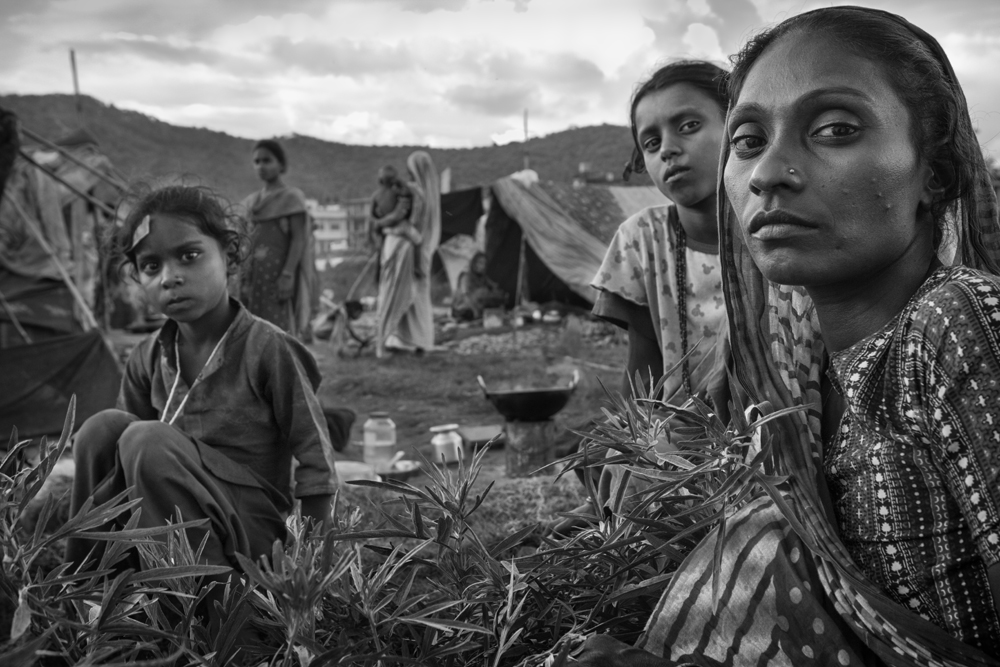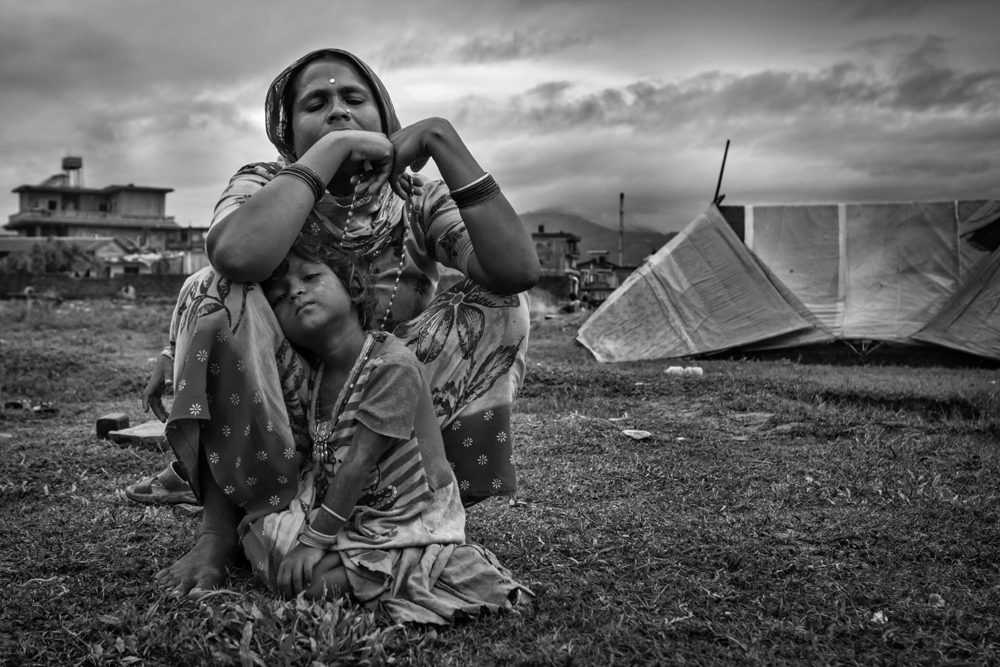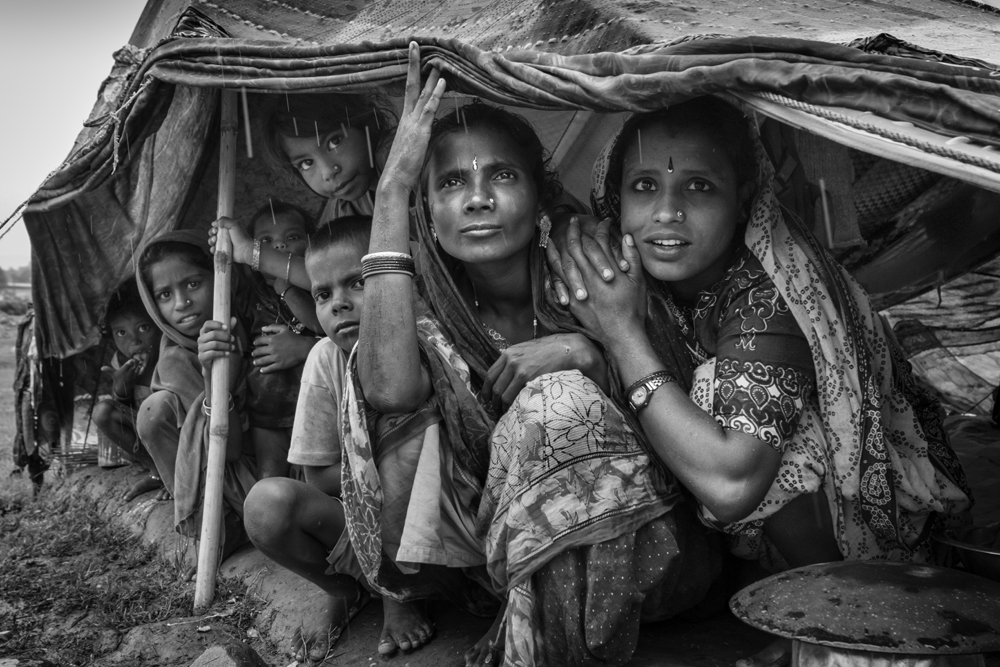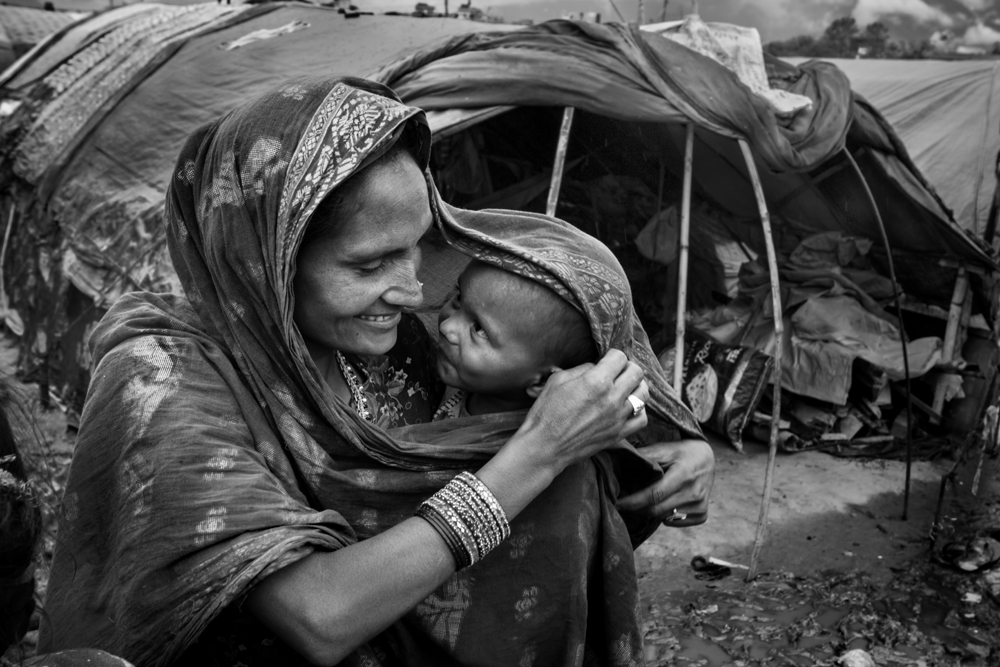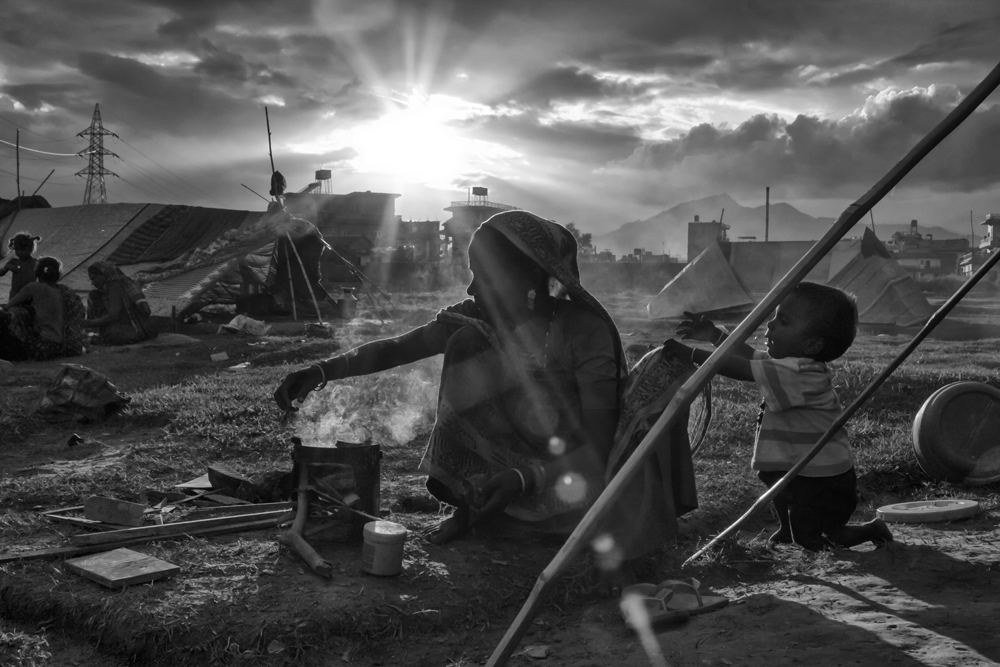Nomadic mothers
In the outskirts of the major cities of Nepal, hundreds of landless families, coming from the Southern plains of Terai, live under tents on waste grounds. Divided into different clans, they speak either Bhojpuri or Maithili and lead a semi-nomadic life, moving from one place to another in search of work and income. Their camps are barely visible and exposed to harsh conditions, especially during monsoon. While their husbands are away, working as labourers or itinerant sellers, the women live in the tents and look after the children. During the day, two or three mothers keep the camp with the children while the others walk barefoot in the neighbouring city. Some of them beg for food, others collect old cloth that they wash and cut into pieces to be sold to the mechanics. For three years, I have accompanied several families from the South East District of Sarlahi. They have lived together in five different camps in the valleys of Kathmandu and Pokhara. The photographs presented here are part of a body of work focused on the daily life in the camps and, more specifically, on the question of nomadic motherhood.
Before getting into photography, Didier worked for many years with refugees, homeless and victims of trauma. His professional path, as an anthropologist and a psychologist, led him to conduct researches in the Himalayan regions where he decided to remain. Since 2009, he lives in Nepal and acts as volunteer within a local group to bring support to landless families living on the margins of Nepalese society. His immersion in the slums, the dumps and the nomadic camps made him choose to dedicate himself to photography and in particular to long-term documentaries, with a focus on social issues that remain little-known. After having documented the daily life of an itinerant group, he spent most of the year 2015 among remote families affected by the Nepal earthquake.
